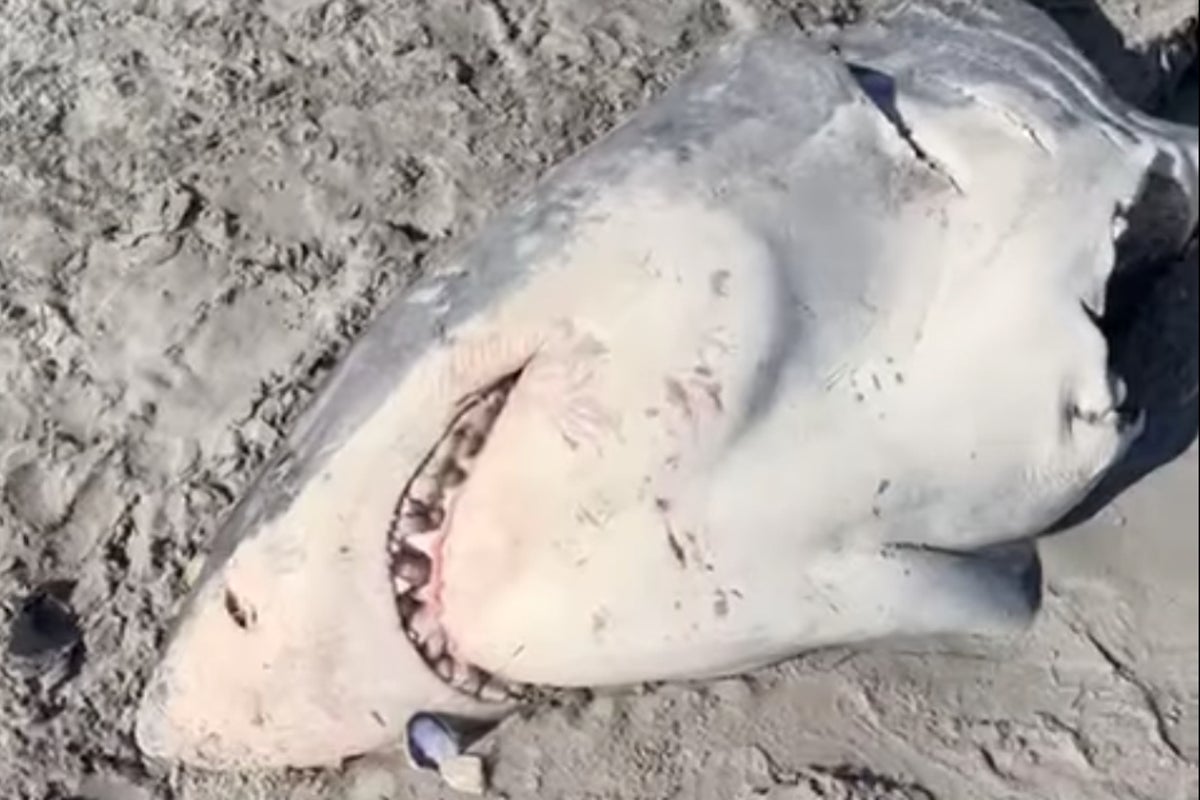
A great white shark whose mauled carcass washed up on a beach in Australia may have fallen prey to a killer whale attack, experts have suggested.
Astonishing footage showed the apex predator’s metres-long body had effectively been torn in half before it was found by residents in the state of Victoria.
Fisherman and bait shop manager, Ben Johnstone, who took the footage near Cape Bridgewater, said he had never seen a shark carcass wash up in 15 years of fishing in the area, telling ABC News: “It’s probably a once in a lifetime experience to see something like that.”
Ben Johnstone went to inspect the shark’s remains after they were found by residents— (Ben Johnstone)
Mr Johnstone believes the shark’s devastating wounds are likely the result of a killer whale attack, with a pod of orcas having been spotted circling in the bay two days prior to the discovery of the carcass.
Great white sharks and killer whales are both apex predators sitting at the top of their respective food chains – but can “come into conflict when they cross paths” and compete for similar prey, according to the Natural History Museum.
“In these instances, the marine predators will attack each other, and there have been multiple observations of unusual behaviours used by killer whales to attack great whites,” the museum’s website states.
In the 1990s, an orca was observed ramming a great white near the California coast, turning it upside down in a suspected attempt to disorentiate it into a trace-like state, before swimming around with it at the surface for 15 minutes to suffocate it.
The killer whale was then observed eating the shark’s liver, which is rich in fats and oils that help the great white to maintain its buoyancy, according to the museum.
Killer whales are highly intelligent apex predators— (PA)
There have now been nine interactions between orcas and great whites reported in Australia and New Zealand, in addition to incidents in the United States and South Africa, according to trophic ecologist Lauren Meyer, who is part of an international team creating a database on such interactions.
Dr Meyer, of Flinders University, told ABC that, although it was not “100 per cent clear” what happened to the shark, it was likely a killer whale had attacked it to “slurp out” its liver.
“We’re not actually sure why killer whales are such picky eaters,” Dr Meyer said. “We see this with things like humpback whales, where [killer whales] come in and actually eat the tongue and leave the rest of the whale.
“We certainly see that they prefer the liver of white sharks, mako sharks, bronze whalers and sevengills, and even tiger sharks. We also see they like to eat the intestines of sunfish, which is really strange, and dugong intestines.”
Samples from the shark’s carcass has been sent to government agencies and academics, and Dr Meyer said researchers would look at rake marks and leftover genetics, such as saliva, while they continue to investigate the incident.
But she said she was “not surprised” to see such an incident happen in Portland, which is “an important corridor” for great whites and also a hunting ground for orcas.
Female great white sharks grow to an average length of more than 4 metres— (PA)
According to the Natural History Museum, following attacks in California and South Africa, it appeared that the entire ecosystem in those areas began to change, in a way that concerned scientists.
By scaring away the great whites for weeks or even months, the orcas were observed to have altered the habits of other sharks, abalone and penguins.
“There is only so much pressure an ecosystem can take, and the impacts of these orca removing sharks are likely far reaching,” marine biologist Alison Towner observed last year.







